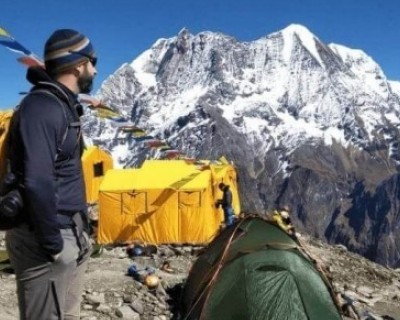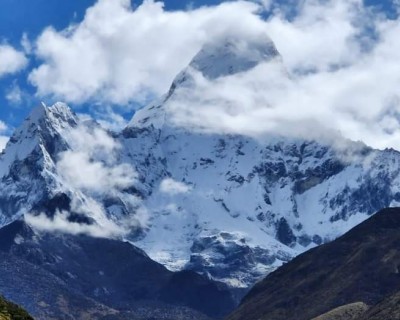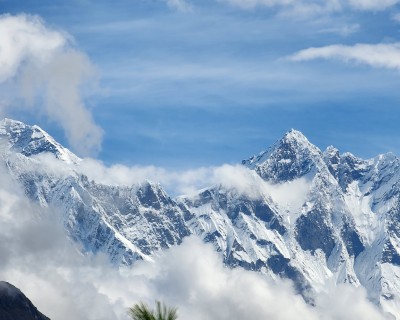Corona Virus (COVID-19)
Introduction
Covid-19 (Coronavirus disease) is an infectious disease which is caused by the newly found coronavirus which was first seen in China.
Most people who are infected with the COVID-19 virus will face mild to moderate respiratory illness and also recover without requiring special treatment. More then a young, the older people and those who are having the medical problems like cardiovascular disease, diabetes, chronic respiratory disease, and cancer are more likely to be infected and develop the serious illness.
The best way to prevent this pandemic or to slow down the transmission of coronavirus is by being the well informed/ aware of the COVID-19 virus, including its causes and how it spreads. You can also protect yourself and others from its infection by washing your hand very frequently, using an alcohol-based sanitizer and by not touching your face.
The COVID-19 virus spreads through the droplets of saliva when sharing the foods or discharges coming from the nose when an infected person coughs or sneezes so it very important that you also practice respiratory etiquette that is by coughing into a flexed elbow.
Pandemic in Nepal
Covid-19 Pandemic in Nepal is the part of the worldwide pandemic of the coronavirus disease 2019 which is also known as the COVID-19 and is caused by the severing acute respiratory syndrome coronavirus-2.
The first cause of COVID-19 in Nepal was confirmed on 23 January 2020, in a 31-years boy who was the student and had returned to Kathmandu from Wuhan on 9 January, tested positive of the virus. This case was recorded as the first case of COVID-19 in South Asia. After some times this pandemic disease starts spreading. Between the January and March, Nepal took the important steps to prevent a spread of this pandemic by preparing for the essential supplies, including equipment and medicine, upgrading infrastructure, training medical personal, spreading the public awareness and many more. After the first cause, the second cases were confirmed on 23 March 2020 in Kathmandu. After that, the disease was locally transmitted and the first cases were confirmed on 4 April in Kailali District. The first death due to this pandemic occurred on 14 May- was a pregnant woman of Kathmandu. As of 26 July 2020, the Ministry of Health and Population has confirmed a total of 18,613 cases, affecting all the 77 district from that 13,128 have recovered, while 45 lost their life due to this pandemic. 2,55,728-PCR tests have been performed in 20 laboratories across the country since late January.
A country lockdown came into the effect on 24 March 2020 and ended on July 22.
For the effective one to prevent the spread of this pandemic, Nepal established health-desk at the Tribhuvan international airport as well as on the all border checkpoints with India from mid-January. All the land border as well as of china were compellingly sealed off for the shorten periods of the times, and all the international flights were also suspended. This pandemic also effects in the education sector as all the academic examination were cancelled and school and college were closed. Quarantine centre and temporary hospital are being set up in all the district across the country. All the shops and service centre are closed for certain times expect the banking sector. Laboratory facilities are expanded. Hospital is setting up the ICU units and isolation bed for the quick service for the victims.
To prevent the spread of this pandemic SAARC countries are co-operating in controlling the disease across the region. Germany, United States, India increase this support to the Nepal health sector.
Due to this pandemic, Nepal cancelled the international promotion activities related to Visit Nepal 2020. It’s the economy affected by the pandemic. Its also impact on foreign employment, tourism sector, manufacturing, construction, trade and many more.
There have been the more infected cases of Nepalese in abroad than in the home, with the total confirmed infection of 17,792 cases where around 1,000 return their home after recovery and around 127 lost their lives around the globe.
Things to know about COVID-19?
Some measure symptoms of the coronavirus
The most common symptoms of COVID-19 are:
Most common symptoms:
Less common symptoms:
- Aches and pains
- Sore throat
- Diarrhoea
- Conjunctivitis
- Headache
- Loss of taste or smell
- Rashes on skin
- Discolouration of fingers and toes.
Serious symptoms
- Difficulty on breathing or shortness of breath
- Chest pain or pressure
- Loss of speech or movement
People who are older have the higher risk of getting the serious illness from COVID-19, as the risk increase with the age, as well as the people who have the chronic medical conditions also may have a high risk of the serious illness.
Existing chronic medical condition increases the risks of the serious illness from coronavirus include:
- Serious heart diseases like heart failure, coronary artery disease or cardiomyopathy
- Type 2 diabetes
- Sickle cell disease
- Chronic kidney disease
Other conditions also increase the risk of serious illness such are;
- Asthma
- Liver disease
- Brain and nervous system condition
- High blood pressure
Visit the hospital immediately if you discover the serious symptoms. Always call the doctor before visiting there.
People with mild symptoms who seems healthy can manage their symptoms at home.
On the average it can take around 5-6 days to see the symptoms when someone is infected with the virus, however, it can also take 14 days to get the result.
Some patients may have aches and pain, runny nose, sore throat and nasal congestion. These symptoms are usually mild and bein gradually. More about 80% recover from the disease without any special treatment.
Perventation of Coronavirus
The prevention and slow down the transmission of COVID-19, read the following:
- Do wash your hands regularly with the soap and water.
- Use the hand sanitizer based with alcohol-based.
- Avoid touching your face with your hands.
- Cover your mouth and nose with mask and also always cover your mouths and nose when coughing or sneezing.
- Stay home if you feel uneasy and unwell
- Avoid smoking and drinking as well as other activities that weaken the lungs.
- Keep the physical distancing by avoiding unnecessary travel and stay away from the large group of people.
So it's far better to stay home and stay safe for not getting infected with this virus. Nepal Hiking Trek.

.jpg)






